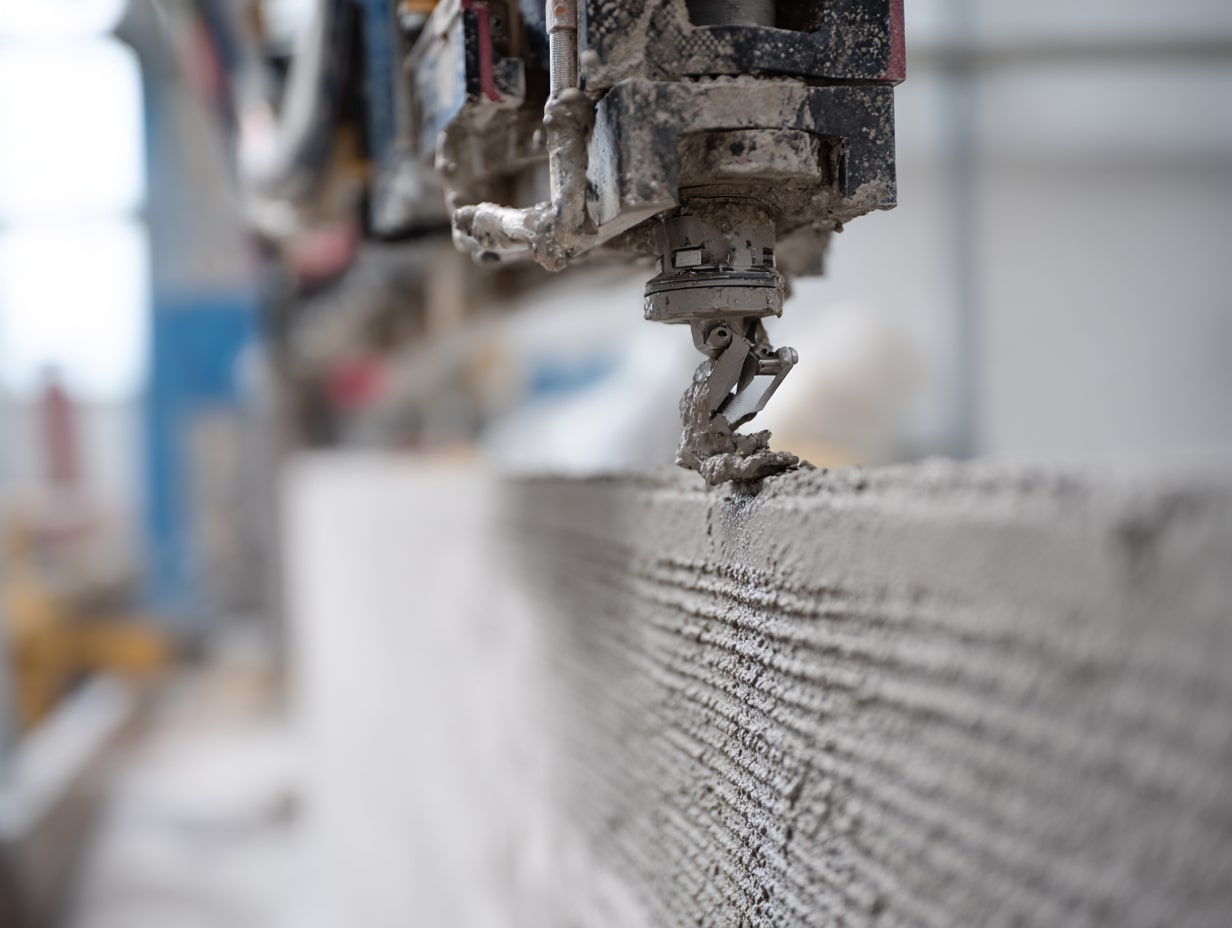- Home
- Articles
- Architectural Portfolio
- Architectral Presentation
- Inspirational Stories
- Architecture News
- Visualization
- BIM Industry
- Facade Design
- Parametric Design
- Career
- Landscape Architecture
- Construction
- Artificial Intelligence
- Sketching
- Design Softwares
- Diagrams
- Writing
- Architectural Tips
- Sustainability
- Courses
- Concept
- Technology
- History & Heritage
- Future of Architecture
- Guides & How-To
- Art & Culture
- Projects
- Interior Design
- Competitions
- Jobs
- Store
- Tools
- More
- Home
- Articles
- Architectural Portfolio
- Architectral Presentation
- Inspirational Stories
- Architecture News
- Visualization
- BIM Industry
- Facade Design
- Parametric Design
- Career
- Landscape Architecture
- Construction
- Artificial Intelligence
- Sketching
- Design Softwares
- Diagrams
- Writing
- Architectural Tips
- Sustainability
- Courses
- Concept
- Technology
- History & Heritage
- Future of Architecture
- Guides & How-To
- Art & Culture
- Projects
- Interior Design
- Competitions
- Jobs
- Store
- Tools
- More
Transforming Spaces: The Power of Behavioral Architecture for Well-Being and Connection
Discover how behavioral architecture shapes our environments and influences our actions in meaningful ways. This article explores key principles, such as human-centered design and intuitive layouts, that foster connection and well-being. Dive into real-world applications across residential and commercial spaces, backed by compelling case studies.

In our fast-paced world, the spaces we inhabit influence our behavior more than we realize. Behavioral architecture dives into the fascinating intersection of design and psychology, exploring how our environments shape our actions and decisions. By understanding these dynamics, we can create spaces that promote well-being, productivity, and connection.
Imagine walking into a room designed not just for aesthetics but to encourage collaboration or relaxation. This is the essence of behavioral architecture—crafting environments that respond to our innate human needs. As we delve deeper into this concept, we’ll uncover the principles and strategies that can transform ordinary spaces into powerful tools for positive change. Join us as we explore how thoughtful design can lead to healthier, happier lives.

Table of Contents
ToggleOverview of Behavioral Architecture
Behavioral architecture examines the interplay between our environment and behavior. This discipline focuses on how spatial design influences human actions, emotions, and interactions. By incorporating insights from psychology and sociology, we create spaces that enhance well-being and productivity.

Key Principles of Behavioral Architecture:
- Design for Interaction: Spaces that encourage social interactions foster community and collaboration. Features like communal areas and open layouts facilitate engagement among individuals.
- Promote Well-being: Natural light, greenery, and ergonomic furniture contribute to mental and physical health. By emphasizing these elements, we create environments that enhance overall wellness.
- Encourage Positive Behavior: Subtle design choices, such as intuitive wayfinding and comfortable seating, guide individuals toward desired actions. These decisions shape how people use and navigate spaces.
- Adapt to Human Needs: Understanding diverse user needs helps us create adaptable environments. Flexible spaces accommodate various activities and improve user satisfaction.
- Cognitive Load Reduction: Simplified layouts and organized spaces decrease cognitive overload. This facilitates better decision-making and enhances user experience.
Implementing these principles can transform traditional spaces into environments that promote healthier lifestyles and stronger connections. Through thoughtful design, we harness the potential of our surroundings to inspire positive change.
Principles of Behavioral Architecture
Behavioral architecture encompasses several principles that drive effective design aimed at improving human interaction and overall well-being. We focus on two key aspects: human-centered design and the psychological impact of spaces.

Human-Centered Design
Human-centered design prioritizes the needs and experiences of people in the design process. This approach involves understanding user behaviors, preferences, and feedback to create functional, accessible environments. Key components include:
- Empathy-Based Research: We gather insights through observations, interviews, and surveys to grasp how users interact with spaces.
- Iterative Prototyping: We conduct multiple design iterations, allowing for testing and refinement to enhance user satisfaction and usability.
- Inclusive Design: We incorporate diverse perspectives, ensuring that spaces accommodate various abilities, age groups, and cultural backgrounds.
- User-Centric Features: We implement elements such as adjustable furniture and intuitive signage to facilitate ease of use and enhance user experience.
Psychological Impact of Spaces
The design of a space profoundly influences our emotions, behavior, and overall mental state. Understanding this impact enables us to create environments that foster positive feelings and interactions. Our focus includes:
- Natural Elements: Incorporating plants, water features, and natural materials triggers relaxation and improves mood by connecting individuals with nature.
- Color Psychology: We carefully select color schemes, knowing that colors can evoke specific emotions, such as calmness from blues or energizing effects from yellows.
- Spatial Layout: We design layouts that encourage movement and social interaction while reducing feelings of isolation and stress. Open spaces and designated gathering areas promote connections among users.
- Acoustic Design: We consider soundscapes to minimize noise distractions, enhancing focus and comfort in environments like offices and learning spaces.
By applying these principles, we create spaces that not only meet functional needs but also nurture well-being and encourage positive social interactions.
Applications of Behavioral Architecture
Behavioral architecture has diverse applications across various environments, significantly influencing how individuals interact with their spaces. We explore its impact in residential areas and commercial environments.

Residential Spaces
In residential spaces, behavioral architecture enhances comfort and well-being. We design layouts that promote social interaction, such as open-concept living areas that encourage family gatherings. Incorporating natural light through large windows and skylights can improve mood, while ergonomic furniture supports physical health. Thoughtful storage solutions minimize clutter, helping to reduce stress. By integrating elements like biophilic design—using plants and natural materials—we create calming environments that foster relaxation and mental clarity.
Commercial Environments
In commercial environments, behavioral architecture plays a vital role in productivity and employee satisfaction. Flexible workspaces allow for collaboration and creativity, enabling teams to adapt their surroundings according to their tasks. Incorporating designated quiet areas helps employees recharge, while vibrant colors and artwork stimulate inspiration. Additionally, we utilize intuitive wayfinding strategies to reduce confusion and enhance navigation. By designing spaces that prioritize user experience and comfort, organizations boost morale and efficiency, leading to improved performance and employee retention.
Case Studies in Behavioral Architecture
We explore notable case studies that exemplify the principles of behavioral architecture in action, demonstrating how intentional design choices influence behavior and enhance well-being.

Open Office Spaces
A tech company in San Francisco implemented an open-concept office design to encourage collaboration among its employees. This layout features communal areas, ergonomic furniture, and abundant natural light. As a result, employee engagement increased by 25%, demonstrating how spatial layouts impact interaction and productivity.
Residential Biophilic Design
A residential project in Seattle integrated biophilic design elements, such as indoor plants and natural lighting. The homeowners reported a 30% decrease in stress levels after moving in. This case illustrates how incorporating natural features enhances emotional well-being and creates a calming atmosphere.
Educational Environments
A school district in Colorado revamped its classrooms by incorporating flexible seating and technology integration. The redesigned spaces allowed for dynamic learning environments that adapted to different teaching styles. Student participation rose by 40%, highlighting how intentional design fosters engagement and learning outcomes.
Healthcare Facilities
A hospital in New York City adopted strategies focused on patient-centered design, using soothing colors, art, and natural light. Patients experienced reduced anxiety levels, and their recovery times improved by 15%. This example showcases how the psychological impact of design can enhance the healing process.
Urban Planning
A city in Denmark redesigned public parks to encourage community interaction. The parks featured open spaces, gathering spots, and walking paths. Surveys showed a 50% increase in community events, demonstrating how planning decisions influence social behavior and community cohesion.
These case studies exemplify the significant impact of behavioral architecture in various environments. By focusing on human needs and experiences, we can create spaces that foster positive behaviors and enhance overall well-being.
Challenges and Considerations
Behavioral architecture presents several challenges and considerations that require careful attention during the design process.

- Balancing Aesthetics and Functionality: Designers often face the dilemma of achieving a balance between aesthetics and functionality. While appealing designs attract users, practicality ensures that spaces effectively serve their intended purpose.
- Diverse User Needs: Understanding and accommodating diverse user needs poses a significant challenge. Spaces must cater to varying demographics, preferences, and behaviors, necessitating extensive research and user engagement during the design phase.
- Implementing Technology: Integrating technology into design can enhance user experience but also complicates the process. Designers must consider user familiarity with technology and ensure that interfaces remain intuitive to prevent frustration.
- Sustainability Factors: Incorporating sustainable practices is essential but can complicate material choices and design options. Designers should align sustainable goals with behavioral principles to create spaces that are both eco-friendly and user-centric.
- Measuring Impact: Evaluating the effectiveness of behavioral architecture strategies can be difficult. Establishing clear metrics and conducting post-occupancy evaluations help determine whether design choices positively affect user behavior and well-being.
- Cultural Sensitivity: Cultural differences significantly influence behavior and spatial interactions. Designers need to approach projects with cultural sensitivity, ensuring that spaces resonate with the local community and enhance social connections.
- Maintaining Flexibility: As user behaviors and needs evolve over time, maintaining design flexibility is crucial. Spaces should allow for adaptability, enabling transitions as requirements change, ultimately supporting long-term usability.
By addressing these challenges and considerations, we can enhance the effectiveness of behavioral architecture and create environments that foster well-being, productivity, and community engagement.
Conclusion
Behavioral architecture plays a vital role in shaping our environments and behaviors. We emphasize that thoughtful design can significantly enhance well-being, productivity, and social connections. By applying key principles, we create spaces that cater to human needs, thus supporting healthier lifestyles and stronger relationships.
We understand the importance of human-centered design, which prioritizes user experiences. Utilizing strategies such as iterative prototyping and inclusive features ensures we deliver functional and accessible environments. Additionally, we recognize how design elements, such as natural light and color psychology, profoundly impact emotions and behavior.
The diverse applications of behavioral architecture in residential and commercial spaces highlight its effectiveness. We see how flexible workspaces and open-concept layouts boost satisfaction and productivity in workplaces. In homes, integrating biophilic design creates calming environments that promote relaxation and social interaction.
Notable case studies reinforce the positive outcomes of behavioral architecture. We observe significant increases in employee engagement, reduced stress levels, and enhanced student participation across various settings. These examples illustrate how we can harness design principles to create spaces that inspire and uplift.
Addressing challenges is crucial for effective implementation. We strive to find a balance between aesthetics and functionality while remaining aware of diverse user needs. By integrating sustainable practices and measuring design impacts, we enhance our architectural initiatives effectively. Cultural sensitivity plays a key role, ensuring our designs resonate with the communities we serve.
By focusing on these aspects, we create environments that foster well-being, productivity, and a sense of community, ultimately transforming spaces into tools for positive change.
- architectural psychology
- architecture and well-being
- architecture for well-being
- behavioral architecture
- connective spaces
- design for happiness
- designing for connection
- emotional impact of design
- environmental psychology
- Human Centered Design
- psychological architecture
- spaces for mental health
- therapeutic design
- Transformative Architecture
- well-being architecture
I create and manage digital content for architecture-focused platforms, specializing in blog writing, short-form video editing, visual content production, and social media coordination. With a strong background in project and team management, I bring structure and creativity to every stage of content production. My skills in marketing, visual design, and strategic planning enable me to deliver impactful, brand-aligned results.
Submit your architectural projects
Follow these steps for submission your project. Submission FormLatest Posts
3D Printed Homes: Time, Cost, and What to Expect
3D printed homes explained: realistic timelines (24–72h walls, 8–16 weeks total), true...
How a Contact Centre Boosts Trust in Your Building Business
In construction, trust is the glue that holds projects together. Clients need...
How Real Time Parcel Geolocation Is Redefining Last Mile Efficiency for Modern Businesses
Last mile delivery has become the most critical point in the customer...
How Can Small Spaces Stay Stylish and Relaxing?
In today’s fast-paced urban lifestyle, small living spaces are becoming increasingly common....












Leave a comment